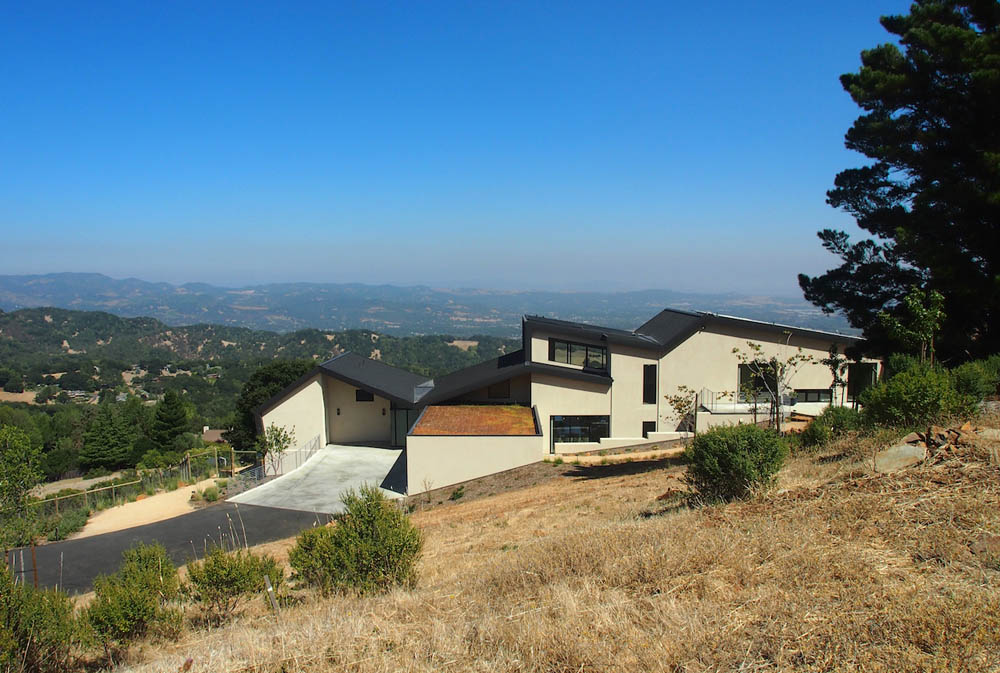
Location: Sonoma, CA
Program: Modern and green custom home, 180pts Green Point Rated
Net pEUI: -0.79
Area: 3600sf + 650 garage
Images: Joseph Schell
General Contractor: Deveau Construction
Structural Engineer: Puns & Associates
Civil Engineer: DeBolt Civil Engineering
Sonoma SIPS Media Coverage:
Architectural West
Architizer
Sonoma SIPS House
Set against an east-facing hillside overlooking the town of Sonoma, this custom home emphasizes view, ventilation and controlled solar access. Its orientation towards the panoramic view aligns with the site’s natural topography and minimizes excavation and off haul of soil while optimizing cross ventilation. It has been awarded an exceptionally high 180 points in the Green Point Certified House program and employs structural insulated panels (SIPS), insulated concrete forms (ICFs) and other passive and active strategies that minimize energy use. Combined with a 11kwH photovoltaic solar array, the house approaches net-zero energy use. The house also features 20,000-gallon capacity rainwater harvesting that minimizes external water used for irrigation.
Every design decision in the home has multiple purposes, affecting function, aesthetics, and livability. The folded roof shape evokes Sonoma County’s rolling hills while also maximizing south facing roof surfaces for solar collectors. The plan’s shallow depth maximizes both views to the east and cross-ventilation from the reliable afternoon ocean air breezes which roll down the hills from the west. Three-dimensional airflow simulations were analyzed during the design phase and adjustments were made to ensure there were no dead-air spaces. Polished concrete floors provide a modern and zero-maintenance finish as well as thermal mass to modulate temperature swings.
The house also features age-in-place strategies for the retired clients starting with organizing almost the entire house on a single level. The kitchen is split into a “front” and “rear” kitchen that can also accommodate wheelchairs if needed. Two 5’ x 5’ stacking closets are prepped for a future elevator, and doors are sized to accommodate a wheelchair, if needed. Additionally, an attached studio accessory dwelling unit can be converted into a future care giver’s apartment.
The foundations are constructed using insulated concrete forms (ICFs) to temper the crawlspace and minimize heat transfer from above. ICFs also reduce waste by providing formwork for the concrete walls. The building shell is constructed of structural insulated panels (SIPS), which provide a tightly sealed and insulated shell as well as save time and labor during framing. The exterior doors and windows are thermally broken aluminum with tinted argon-filled dual glazing.
The house is an example of what the architecture critic Charles Jencks once called “multi-valent” design. Its design is derived from balancing the functional needs of the occupants, the formal requirements of energy efficient passive design, and the metaphorical gesture to the rolling Sonoma hills that surround it.
